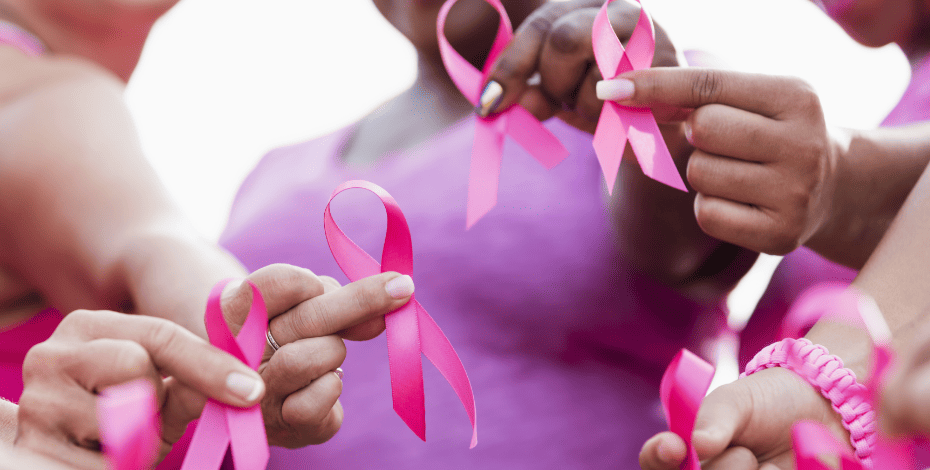References for October 2024
Why Indigenous health needs non-Indigenous allies
Read the InMotion article
- Australian Bureau of Statistics. Estimates of Aboriginal and Torres Strait Islander Australians. 2023. https://www.abs.gov.au/statistics/people/aboriginal-and-torres-strait-islander-peoples
- Physiotherapy Board of Australia. 2022/23 annual report. 2024a. https://www.physiotherapyboard.gov.au/News/Annual-report.aspx
- Physiotherapy Board of Australia. Statistics. 2024b. https://www.physiotherapyboard.gov.au/About/Statistics.aspx
- Australian Human Rights Commission. Close the Gap: Indigenous Health Campaign. https://humanrights.gov.au/our-work/aboriginal-and-torres-strait-islander-social-justice/projects/close-gap-indigenous-health
Notifications and practitioner distress
Read the InMotion article
- Bourne T, Wynants L, Peters M. et al. The impact of complaints procedures on the welfare, health and clinical practice of 7926 doctors in the UK: a cross-sectional survey. BMJ Open. 2015. 5: 1-12.
- Maben J, Hoinville L, Querstret D et al. Living life in limbo: experiences of healthcare professionals during the HCPC fitness to practice investigation process in the UK. BMC Health Serv Res. 2021. 21:839.
- Horsfall S. Doctors who commit suicide whilst under GMC fitness to practice investigation: internal review. London: General Medical Council 2014.
- Biggar S, van der Gerg A, Maher P. et al. ‘Virtual daily grief’ – understanding distress in health practitioners involved in a regulator complaints process: a qualitative study in Australia. Int J Qual Health Care. 2023. 35(4): 1-12.
- https://www.ahpra.gov.au/Notifications.aspx
- https://www.ahpra.gov.au/Notifications/Has-a-concern-been-raised-about-you/Improving-the-notifications-experience.aspx
- https://www.physiotherapyboard.gov.au/News/Annual-report.aspx
Five facts about suicide prevention in physiotherapy
Read the InMotion article
- Black Dog Institute - An evidence-based systems approach to suicide prevention : guidance on planning, commissioning and monitoring (2016).
- Chronic Pain Australia. (2024). 2024 National pain report. https://chronicpainaustralia.org.au/wp-content/uploads/NPW_2024/CPA_2024_NATIONAL_PAIN_REPORT.pdf
- Classen, C. C., & Clark, C. S. (2017). Trauma-informed care. In APA handbook of trauma psychology: Trauma practice, Vol. 2 (pp. 515-541). American Psychological Association. https://doi.org/10.1037/0000020-025
- Fabiano, N., Gupta, A., Fiedorowicz, J. G., Firth, J., Stubbs, B., Vancampfort, D., Schuch, F. B., Carr, L. J., & Solmi, M. (2023). The effect of exercise on suicidal ideation and behaviors: A systematic review and meta-analysis of randomized controlled trials. Journal of Affective Disorders, 330, 355-366 https://doi.org/https://doi.org/10.1016/j.jad.2023.02.071
- Gallagher,K.,O’Brien,C., O’Driscoll,M., Dhalaigh,D., Corcoran,P. & Griffin,E. (2023). Suicide prevention curriculum development for health and social care students: Protocol for a scoping review, PLoS, 18(2), doi.10.1371/journal.pone.0285231.
- Hawgood, J., Woodward, A., Quinnett, P., & De Leo, D. (2021). Gatekeeper Training and Minimum Standards of Competency. Crisis, 43(6), 516-522. https://doi.org/10.1027/0227-5910/a000794
- Heywood,S., Bunzli,S., Dillon, M. et al (2024). Trauma-informed physiotherapy and the principles of safety, trustworthiness, choice, collaboration and empowerment: a qualitative study. Physiotherapy Theory and Practice, 1-16, https://doi.org/10.1080/09593985.2024.2315521.
- Kinchin,I. & Doran, C. ( 2017) The Economic Cost of Suicide and Non-Fatal Suicide Behavior in the Australain Workforce and the Potential Impact of a Workplace Suicide Prevention Strategy, Int.J.Environ.Res.Public Health, 14(4): 347, doi: 10.3390/ijerph14040347
- Lunden,A. & Bergenheim,A. (2020). Encountering suicide in primary healthcare rehabilitation: the experiences of physiotherapists, BMC Psychiatry, 20:597.
- McGrath, R. L., MacDonald, J. B., Verdon, S., Parnell, T., & Smith, M. (2021). Encounters between Physiotherapists and Clients with Suicidal Thoughts and Behaviours: A Narrative Literature Review. New Zealand Journal of Physiotherapy, 49(2), 70-81. https://doi.org/10.15619/NZJP/49.2.03
- McGrath, R. L., Parnell, T., Shephard, S., Verdon, S., & Pope, R. (2024). Physiotherapists often encounter clients disclosing suicidal thoughts and behaviors: a cross-sectional survey of Australian physiotherapists. Physiotherapy Theory and Practice, 1-15. https://doi.org/10.1080/09593985.2024.2327516
- McGrath, R. L., Parnell, T., Verdon, S., MacDonald, J. B., & Smith, M. (2020). Trust, conversations and the ‘middle space’: A qualitative exploration of the experiences of physiotherapists with clients with suicidal thoughts and behaviours. PLoS One, 15(9), Article e0238884. https://doi.org/10.1371/journal.pone.0238884
- McGrath, R. L., Shephard, S., Hemmings, L., Verdon, S., & Parnell, T. (2023). Preventing Suicide: Time to Mobilize the Physical Therapist Workforce. Physical Therapy, 103(11), pzad116. https://doi.org/10.1093/ptj/pzad116
- Morse, R. S., Kral, M. J., McFadden, M., McCord, J., & Easton, L. B. (2019). It takes a village: The nonprofessional mental health worker movement. In M. E. Button & I. Marsh (Eds.), Suicide and social justice: New perspectives on the politics of suicide and suicide prevention (pp. 154–179). Routledge/Taylor & Francis Group. https://doi.org/10.4324/9780429460494-11
- Nafilyan, V., Morgan, J., Mais, D., Sleeman, K. E., Butt, A., Ward, I., Tucker, J., Appleby, L., & Glickman, M. (2023). Risk of suicide after diagnosis of severe physical health conditions: a retrospective cohort study of 47 million people. The Lancet Regional Health–Europe, 25.
- Australian Government n.d. National Mental Health Workforce Strategy/Executive Summary 2022–2032.
- Racine, N., Killam, T., & Madigan, S. (2020). Trauma-informed care as a universal precaution: Beyond the adverse childhood experiences questionnaire. JAMA Pediatrics, 174(1), 5-6. https://doi.org/10.1001/jamapediatrics.2019.3866
- Roses in the Ocean. (n.d.). Touchpoints. https://rosesintheocean.com.au/what-we-do/workshops/touchpoints/
- Sadath, A., Troya, M. I., Nicholson, S., Cully, G., Leahy, D., Ramos Costa, A. P., Benson, R., Corcoran, P., Griffin, E., Phillip, E., Cassidy, E., Jeffers, A., Shiely, F., Alberdi-Páramo, Í., Kavalidou, K., & Arensman, E. (2023). Physical and mental illness comorbidity among individuals with frequent self-harm episodes: A mixed-methods study. Front Psychiatry, 14, 1121313. https://doi.org/10.3389/fpsyt.2023.1121313
- Suicide Prevention Australia. (2023a). Foundations Paper: Priority Populations. https://www.suicidepreventionaust.org/wp-content/uploads/2023/02/Foundations-Priority-Populations.pdf
- Suicide Prevention Australia (2023b). Suicide Prevention: A Competency Framework for the Healthcare Sector.
- Tasker, D., Loftus, S., & Higgs, J. (2012). Head, heart and hands. Creating mindful dialogues in community-based physiotherapy. New Zealand Journal of Physiotherapy, 40(1), 5–12-15–12.
- World Health Organization. (2012). Public health action for the prevention of suicide: A framework. https://iris.who.int/handle/10665/75166
Concussion: more than just a 'knock to the head'
Read the InMotion article
- Sirena Soriano, Kristen Curry, Saeed S, Sadrameli, Qi Wang, Michael Nute… Sonia Villapol. Alterations to the gut microbiome after sport-related concussion in a collegiate football players cohort: A pilot study. Soriano et al. 2022. Brain Behav Immun Health. 2022 May; 21: 100438.Published online 2022 Mar 1. doi: 10.1016/j.bbih.2022.100438
- David R. Howell, PhD and Julia Southard. The Molecular Pathophysiology of Concussion. Clin Sports Med. Author manuscript; available in PMC 2022 Jun 27. Published in final edited form as: Clin Sports Med. 2021 Jan; 40(1): 39–51. doi: 10.1016/j.csm.2020.08.001
- Eric Eyolfson, Asher Khan, Richelle Mychasiuk,and Alexander W. Lohman. Microglia dynamics in adolescent traumatic brain injury. J Neuroinflammation. 2020; 17: 326. Published online 2020 Oct 29. doi: 10.1186/s12974-020-01994-z
- Marissa Sgro, Giulia Iacono, Glenn R Yamakawa, Zoe N Kodila, Benjamin J Marsland and Richelle Mychasiuk. Age matters: Microbiome depletion prior to repeat mild traumatic brain injury differentially alters microbial composition and function in adolescent and adult rats. PLoS One. 2022 Nov 30;17(11):e0278259.doi: 10.1371/journal.pone.0278259. eCollection 2022.
- Nozar Aghakhani. Relationship between mild traumatic brain injury and the gut microbiome: A scoping review. J Neurosci Res . 2022 Mar;100(3):827-834. doi: 10.1002/jnr.25004. Epub 2021 Dec 29.
- Daniel N. de Souza, Mitchell Jarmol, Carter A. Bell, Christina Marini, Laura J. Balcer, Steven L. Galetta, and Scott N. Grossman. Precision Concussion Management: Approaches to Quantifying Head Injury Severity and Recovery. Brain Sci. 2023 Sep; 13(9): 1352. Published online 2023 Sep 21. doi: 10.3390/brainsci13091352
- Benjamin Ferry; Alexei DeCastro. Concussion. 2023. StatPearls. https://www.ncbi.nlm.nih.gov/books/NBK537017/
- Daniel N. de Souza, Mitchell Jarmol, Carter A. Bell, Christina Marini, Laura J. Balcer, Steven L. Galetta, and Scott N. Grossman. Precision Concussion Management: Approaches to Quantifying Head Injury Severity and Recovery. Brain Sci. 2023 Sep; 13(9): 1352. Published online 2023 Sep 21. doi: 10.3390/brainsci13091352
- Brennan, J.H., Mitra, B., Synnot, A. et al. Accelerometers for the Assessment of Concussion in Male Athletes: A Systematic Review and Meta-Analysis. Sports Med 47, 469–478 (2017). https://doi.org/10.1007/s40279-016-0582-1
- Auxéméry Y. Post-traumatic psychiatric disorders: PTSD is not the only diagnosis. Presse Med. 2018 May;47(5):423-430. doi: 10.1016/j.lpm.2017.12.006. Epub 2018 Mar 24. PMID: 29580906.
- Nicole A. Miranda, PT, DPT, Jeffrey R. Boris, MD, Kristen M. Kouvel, PT, DPT, PCS, and Lauren Stiles, JD. Activity and Exercise Intolerance After Concussion: Identification and Management of Postural Orthostatic Tachycardia Syndrome. J Neurol Phys Ther. 2018 Jul; 42(3): 163–171. Published online 2018 Jun 1. doi: 10.1097/NPT.0000000000000231
- Cara M. Permenter; Ricardo J. Fernández-de Thomas; Andrew l. Sherman. Postconcussive Syndrome. 2022. StatPearls. https://www.ncbi.nlm.nih.gov/books/NBK534786/
- Rytter HM, Graff HJ, Henriksen HK, et al. Nonpharmacological Treatment of Persistent Postconcussion Symptoms in Adults: A Systematic Review and Meta-analysis and Guideline Recommendation. JAMA Netw Open. 2021;4(11):e2132221. doi:10.1001/jamanetworkopen.2021.32221
- Suzanne Polinder, Maryse C. Cnossen, Ruben G. L. Real, Amra Covic, Anastasia Gorbunova, Daphne C. Voormolen, Christina L. Master, Juanita A. Haagsma, Ramon Diaz-Arrastia, and Nicole von Steinbuechel. A Multidimensional Approach to Post-concussion Symptoms in Mild Traumatic Brain Injury. Front Neurol. 2018; 9: 1113. Published online 2018 Dec 19. doi: 10.3389/fneur.2018.01113
- Elbin, R. J. PhD; Stephenson, Katie MS; Lipinski, Damon PhD; Maxey, Kristin BS; Womble, Melissa N. PhD; Reynolds, Erin PsyD; Covert, Kayla DPT; Kontos, Anthony P. PhD. n-Person Versus Telehealth for Concussion Clinical Care in Adolescents: A Pilot Study of Therapeutic Alliance and Patient Satisfaction. Journal of Head Trauma Rehabilitation 37(4):p 213-219, July/August 2022. doi: 10.1097/HTR.0000000000000707
- Ellis, M.J. and Russell K. The Potential of Telemedicine to Improve Pediatric Concussion Care in Rural and Remote Communities in Canada. Front Neurol. 2019; 10: 840. Published online 2019 Aug 2. doi: 10.3389/fneur.2019.00840
Understanding metabolic syndrome
Read the InMotion article
- Alberti K., Eckel R.H., Grundy S.M., Zimmet P.Z., Cleeman J.I., Donato K.A., et al (2024). Harmonizing the metabolic syndrome: a joint interim statement of the international diabetes federation task force on epidemiology and prevention; National Heart, Lung, and Blood Institute; American Heart Association; World Heart Federation; International Atherosclerosis Society; and International Association for the Study of Obesity. Circulation. 2009; 120: 1640-1645 https://doi.org/10.1161/CIRCULATIONAHA.109.192644
- Mastwyk S, Taylor NF, Lowe A, Dalton C and Peiris CL (2024a) “You don’t know what you don’t know”: Knowledge, attitudes, and current practice of physiotherapists in recognising and managing metabolic syndrome, a mixed methods study. Physiotherapy, Volume 124, 75 – 84 https://doi.org/10.1016/j.physio.2024.01.008
- Mastwyk S, Taylor NF, Lowe A, Dalton C and Peiris CL (2024b) Metabolic syndrome is prevalent and undiagnosed in clients attending private practice physiotherapy: a cross-sectional study. Physiotherapy, Volume 124, 116 – 125 https://doi.org/10.1016/j.physio.2024.03.003
- Peiris C, Harding K, Porter J, Shields N, Gilfillan C and Taylor N (2022). Understanding the hidden epidemic of metabolic syndrome in people accessing community rehabilitation: a cross-sectional study of physical activity, dietary intake, and health literacy. Disability and Rehabilitation, 45(9), 1471–1479. https://doi.org/10.1080/09638288.2022.2065540
© Copyright 2025 by Australian Physiotherapy Association. All rights reserved.





